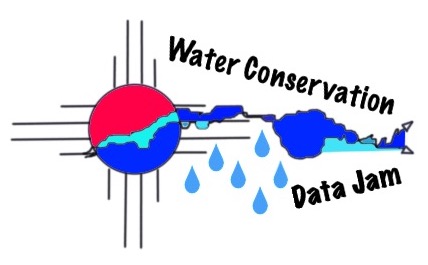|
Water Use Variables from the NM Water Use by Categories Report:
- Residential water use: This includes all water supplied by community water systems that have common collection, treatment, and distribution facilities to provide water to multiple locations. For example, the Los Lunas Water System is a major public water supplier in Valencia County. Most public water suppliers report the meter records of water use to the NM Office of the State Engineer. It also includes domestic, self-supplied water, which would include single family houses with their own well. The domestic, self-supplied water withdrawals are calculated by multiplying water use per person per day (currently estimated at 80-100 gallons, depending on the county) by the number of people served by self-supplied water.
- While we call this “residential use,” this public water supply category would also capture water supplied by public water suppliers to golf courses, parks, and athletic fields.
- Irrigated agricultural water use: This category includes all withdrawals of water for the irrigation of crops grown on farms, ranches, and wildlife refuges. This value is estimated using a multi-step process that includes:
- Calculating the total acreage of irrigated acreage by crop and by irrigation system (drip, flood, or sprinkler) using a Geographic Information System (GIS) to integrate map layers showing the entire state. Information from agencies like the USDA Farm Service Agency and county extension agents was used to validate the values determined using maps and aerial images.
- Obtaining temperature and precipitation data from the state.
- Determining the irrigation season for each crop.
- Using the information from above to calculate the “weighted consumptive irrigation requirement” for each crop.
- Livestock use: This category includes water used to raise livestock, maintain livestock facilities, and provide for on-farm processing of poultry and dairy products. These values are estimated using two pieces of information:
- The number of livestock by species per county – These values come primarily from the New Mexico Department of Agriculture.
- Water withdrawals – Metered water withdrawals are used when available. When the water use is not metered, these values are estimated using water requirements per animal per day for each livestock species (e.g., 65 gallons per dairy cow per day and 3 gallons per hog per day).
- Commercial use: This category includes use by self-supplied businesses (e.g. motels, restaurants), schools, hospitals, and self-supplied golf courses. The values are calculated by combining metered withdrawals and estimating non-metered withdrawals based on earlier records.
- Industrial and mining use: Industrial water use includes businesses that process raw materials or manufacture goods. The industrial category also includes water used for construction of highways and buildings. Mining use includes water used for oil and gas production, quarrying, and milling. The values are calculated by combining metered withdrawals and estimating non-metered withdrawals based on earlier records.
- Power use: This category includes all self-supplied power generating facilities, including coal-mining operations associated with a power generating facility. The values are calculated by combining metered withdrawals and contacting non-metered facilities.
|


